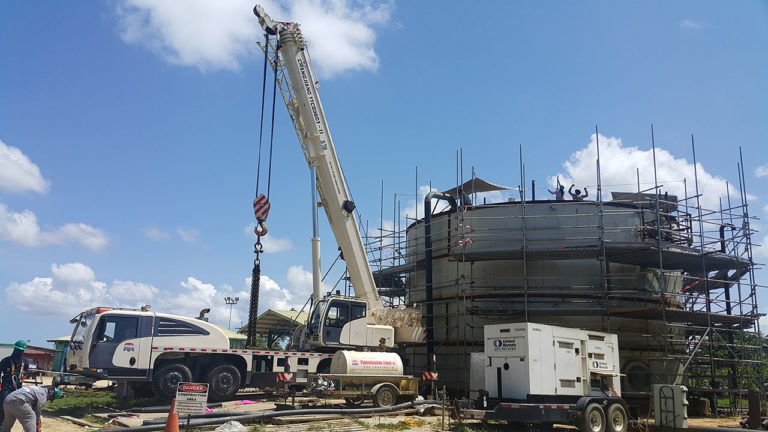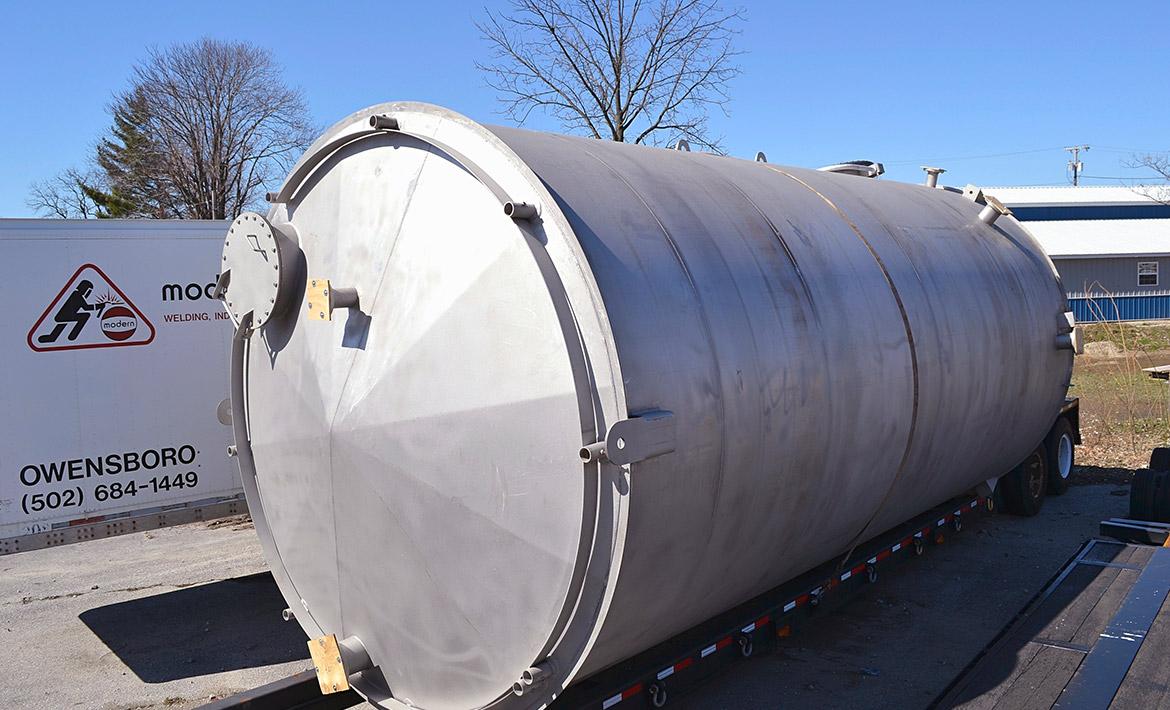Understanding the Relevance of Welding Assessment in High Quality Assurance Processes
Welding assessment is a vital component of high quality guarantee in construction and production. It assures that welds abide by well-known criteria, which is crucial for architectural stability. Different inspection strategies, from visual to ultrasonic screening, assistance determine imperfections early. This aggressive technique not only stops costly repairs but also boosts safety and security. Comprehending the nuances of welding examination can expose its broader implications for industry conformity and online reputation. API 650 Welding Inspection. What lies below the surface of these methods?
The Duty of Welding Evaluation in Quality Control
While welding is a crucial process in numerous industries, its quality and honesty hinge considerably on reliable inspection practices. Welding evaluation offers as a secure, making sure that welds fulfill well established criteria and requirements. This process not just determines problems but additionally examines the overall handiwork, thereby adding to the safety and security and durability of bonded structures. Assessments are essential to top quality guarantee, as they help prevent costly failings and maintain compliance with market regulations. By using proficient examiners, organizations can improve their operational efficiency and maintain their online reputations. Furthermore, the understandings obtained from examinations can educate constant improvement, causing better methods and training for welders. Inevitably, welding evaluation functions as a crucial web link in the quality control chain, making sure that every joint is trustworthy and capable of enduring the roughness of its intended application. This diligence is necessary for the stability of facilities and the security of end customers.
Kinds Of Welding Inspections
Welding assessments include a series of approaches made to examine the high quality and stability of welds. These inspections are crucial in making sure compliance with market standards and requirements. Common sorts of welding assessments consist of aesthetic assessment, which permits instant identification of surface abnormalities; ultrasonic testing, which makes use of high-frequency acoustic waves to spot internal flaws; and radiographic testing, employing X-rays or gamma rays to reveal weld integrity below the surface area (API 650 Welding Inspection). In addition, magnetic fragment screening is used to identify surface area and near-surface discontinuities in ferromagnetic materials, while color penetrant screening supplies a technique for disclosing surface-breaking flaws. Each sort of examination offers a certain purpose, adding to the overall quality control process. By using a mix of these strategies, inspectors can supply a thorough assessment of welding top quality, ultimately making certain the security and dependability of welded frameworks
Usual Defects Identified in Welding
A variety of typical issues can take place throughout the welding procedure, impacting the stability and efficiency of welded structures. These defects consist of porosity, which involves trapped gas pockets within the weld, weakening its toughness. Cracks might also create because of quick cooling or incorrect joint style, bring about prospective failure under anxiety. Insufficient blend takes place when there wants melting of the base steel, why not try these out causing weak bonds. One more issue, undercutting, includes the removal of base metal along the weld side, developing a significant structural weak point. In addition, excessive spatter can influence the look and demand more cleansing or repair work. Misalignment can lead to uneven weld grains, endangering the general quality. Recognizing these issues early with correct examination methods is vital to guarantee the integrity and safety and security of bonded elements, ultimately safeguarding the efficiency of the entire structure.

Benefits of Regular Welding Assessments
Routine examinations play a significant function in keeping the top quality and safety and security of bonded frameworks, specifically in light of the usual flaws previously detailed. These assessments give an opportunity to determine and fix problems before they rise right into severe issues, guaranteeing architectural honesty. By discovering problems early, companies can lessen repair work costs and stay clear of potential project hold-ups.
Additionally, routine welding examinations enhance compliance with sector criteria and regulations, fostering count on amongst stakeholders. This adherence not only safeguards the company's online reputation however additionally adds to boosted security for employees and the public.
Consistent examinations facilitate better training and skill development for welders, as responses from evaluations can guide enhancements. Inevitably, the benefits of regular welding assessments extend past immediate high quality assurance, advertising long-term operational effectiveness and integrity in bonded frameworks.
Best Practices for Effective Welding Assessment
Applying best methods in welding inspection is crucial for guaranteeing the highest possible standards of quality and safety and security. Initially, inspectors need from this source to be properly trained and accredited, having an extensive understanding of welding strategies and materials. Using sophisticated inspection technologies, such as ultrasonic screening and radiography, improves the discovery of defects that might not be noticeable to the naked eye. Developing a clear assessment strategy, describing the requirements and regularity of assessments, assurances consistency and thoroughness.

Recording all searchings for meticulously is important for traceability and responsibility. Regular calibration of examination equipment guarantees precision, while maintaining a organized and clean workspace decreases the risk of contamination. Additionally, promoting open interaction among staff member assists in the sharing of understandings and advertises a culture of top quality. By adhering to these best practices, organizations can especially boost their welding high quality guarantee processes, ultimately causing safer and extra trusted items.

Often Asked Questions
What Qualifications Are Needed for a Welding Examiner?
A welding assessor normally needs qualification from recognized organizations, such as the American Welding Society (AWS) or the International Institute of Welding (IIW), in addition to appropriate experience and knowledge in welding processes and top quality criteria.
How Typically Should Welding Inspections Be Executed?
Welding examinations should be performed routinely, typically at numerous job phases, including prior to, during, and after welding processes - API 650 Welding Inspection. The regularity frequently relies on job requirements, governing requirements, and the intricacy of the welds included
What Are the Prices Related To Welding Inspections?
The prices connected with welding inspections vary extensively, usually varying from a few hundred to numerous thousand dollars, relying on elements like inspection type, job go to the website dimension, and location, impacting overall task budget plans and timelines.
Can Welding Inspections Be Performed From Another Location?
Yes, welding assessments can be carried out remotely making use of sophisticated modern technologies such as drones, electronic cameras, and ultrasonic screening. These methods enable inspectors to evaluate weld stability without being literally existing, improving performance and safety and security in numerous environments.
How Do Evaluation Results Effect Task Timelines?
Inspection results can significantly influence job timelines by identifying issues early, bring about necessary rework or changes. Delays may take place if examinations disclose issues needing resolution, eventually influencing overall project conclusion and spending plan adherence.
Welding evaluations incorporate a range of techniques designed to examine the top quality and honesty of welds. Typical types of welding evaluations consist of aesthetic evaluation, which allows for instant recognition of surface abnormalities; ultrasonic testing, which makes use of high-frequency sound waves to identify interior defects; and radiographic screening, utilizing X-rays or gamma rays to reveal weld stability beneath the surface. Regular examinations assist in far better training and ability growth for welders, as responses from evaluations can direct improvements. Applying ideal techniques in welding assessment is vital for guaranteeing the highest requirements of quality and safety and security. Welding assessments should be done routinely, generally at numerous job phases, consisting of before, during, and after welding procedures.